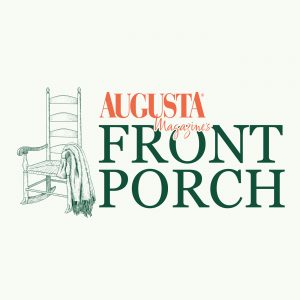By Mac McCall | Photos provided by Mac McCall
I slouch in my home office at the end of another monotonous day huddled over a computer screen, steadily incubating the legion of health issues endemic to the modern American sedentary lifestyle. Unexpectedly, an old friend’s name flashes across my phone. I answer, and John Patten “JP” Moss’ voice crackles like brushfire through the speaker. “Hey, man. We’ll be burning Panola Mountain tomorrow, and you’re welcome to come and watch.” Instead of crouching behind a desk and making hefty deposits into a future of obesity and heart disease, Moss and his team will be participating in one of the oldest tasks performed by human hands in the American South; the prescribed burn. I pack my bag, knowing the next morning I’ll be standing wreathed in flame on a burning prairie.
Although we’ve made every possible attempt to drive it from memory, the pre-Columbian South was born amidst flame. Fire kindled by lightning strikes had always been present in the Southern woodlands, but it gained a powerful new ignition vector with the arrival of humans in North America around 12,500 years ago. Native Americans initially burned primarily for hunting.1 As their societies became more sophisticated, agricultural cultivation increased in importance, populations swelled and their use of fire rapidly increased. By the time of Columbus, roughly 1.5 million to 2 million people lived in the Southeast, mostly in the coastal plain.2 Fire allowed them to manipulate their environment, controlling the “composition and pattern” of vegetation.3 Burns cleared land for cultivation, encouraged the growth of edible plants, managed game habitat and defensively fireproofed areas around villages, among other purposes. Anecdotal evidence even indicates that Native Americans would use fire in combat situations.4
This proliferation of fire aided for a variety of species, the most consequential of which was the longleaf pine. Longleaf’s atypical seedling development, where it spends years in a “grass stage” growing deep roots and then bolting quickly upward, allows it to flourish in frequently burned areas. Adult trees also possess a thick bark which protects the interior tissue from heat, allowing the trees to weather understory fires.5 Regular fire controlled longleaf’s less-hardy competitors and prevented the buildups of fuel that can lead to catastrophic stand replacement fires. Spreading north from ice age refugia along the Gulf Coast, longleaf initially established itself on the coastal plain around 8,000 years ago. For the next 4,000 years, coinciding with the growth of Native American populations and their adoption of agriculture, it engaged in a relentless march of conquest across the South, eventually ruling an imperium extending from modern-day Virginia to Texas.6

By the time the first European explorers made their way through the southlands, millennia of interaction between humans, fire and the environment had created one of the most extensive and majestic ecosystems on the North American continent. Vast longleaf forests dominated the South, a host of arrow-straight sentinels guarding 92 million acres of the coastal plain and Piedmont. These were no Mirkwood or Black Forests. Rather, they were open, park-like woodlands. Luxurious groundcover blanketed land where regular fire prevented the growth of midstories. In many places, longleaf opened into wide, grassy prairies. Early Europeans wrote about endless longleaf stands, open grasslands, smoke columns and twilight lands of smoke and haze.7 William Bartram, chronicling his travels through the South in the late 1700s, described what he encountered: “A vast plain which extends west sixty or seventy miles … mostly a forest of the great long-leaved pine, the earth covered with grass, interspersed with an infinite variety of herbaceous plants, and embellished with extensive savannas.” Missing the spectacle of those vast, open forests stretching interminably across our homeland is one of my great quarrels with my late 20th century birthdate.
I gripe because the great longleaf stands would fall. To provide fuel for the industrial revolution, a plethora of logging consumed whole Southern forests from 1880 to 1920, leaving behind moonscapes of woody detritus. This slaughter of a national treasure was rightly denounced by ecologist B. W. Wells as “one of the major social crimes of American history.” In the aftermath, well-intentioned but ecologically ignorant American conservationists led by the U.S. Forest Service assumed that the best way to allow longleaf to recover would be to completely suppress fire. As eloquently stated by Larry Landers of the Joseph Jones Ecological Research Center, “Taking fire out of the longleaf forest is like taking the rain out of the rainforest.” Without the winnowing power of flames, longleaf failed to regenerate. In its place grew dense, miscegenated mixes of loblolly and hardwoods. Suffocating shrubbery shaded the forest floor, choking out the diverse groundcover that flourished under a regular fire regime. The prairies disappeared, engulfed by creeping succession. By the late 20th century, only 3.8 million acres of degraded longleaf remained.
Moss’ team is out to fix that. Moss, a fellow Augusta native, graduate of Augusta Prep and Berry College, works for a Georgia Department of Natural Resources burn team based at Sandhills Wildlife Management Area in west Georgia. The DNR is one of a constellation of state, federal, local and private organizations reintroducing fire to the choked and overburdened ecosystems of the Southeast. Like the Native Americans, they burn to further a variety of objectives, including timber management, promotion of declining ecosystems/species, and wildfire mitigation. I, the corporate cretin that I am, can do little but envy them.

They dress in flame-retardant clothes, hard hats and fire boots. Their tools are drip torches (hand-held canisters that release a burning solution of diesel and gasoline) and flamethrower-equipped four-wheelers that can lay fire while on the move. On larger burns, helicopters equipped with “Plastic Sphere Dispensers” bombard the target area with ping-pong balls filled with an incendiary mix of glycol and potassium permanganate, combusting in freefall. These are fire tools that a woodland Native American could never have imagined in his wildest dreams.
Today, Moss’ team is burning a stretch of open grassland in Panola Mountain State Park, a faint whisper of the great prairies that once punctuated the Piedmont, probably similar in some aspects to the “pleasant grassy open plain” Bartram described near Augusta in the 1770s. They begin methodically combing the adjoining forest floor with drip torches, leaving splatters of flame behind. The going is slow at first. The damned hardwoods, which have infested the woodland, leave flame-retardant leaves which create defensive fields of mulch. Fire struggles and often falters in the face of these obstacles. The indiscriminate slaughter of the longleaf stands and decades of fire suppression have taken their toll.
As they near the grassland, the flames finally begin to gather momentum. For these plants, it’s burn or die. “That’s what they’re made to do. That’s how they perpetuate themselves. If they don’t burn, then the trees invade,” Moss explains. And burn they do. Fire sweeps like contagion through the prairie, a rolling front of flame in some places 15 feet high. The fronts converge, driven by convection, and explode upon impact, scorching and killing the woody plants which have taken root in the field, leaving charred earth in their wake. Soon, these blackened areas will be freshly green with new life as the seeds of native grasses take root.
This kind of regular, anthropogenic incendiary cleansing is absolutely crucial for the health of Southern ecosystems. We humans do not exist independently of our environment, but rather as an inseparable component of it. The majestic longleaf forest which was once the defining hallmark of the South was not an untouched “forest primeval,” but rather a complex ecosystem partially dependent upon human input. Today, we are finally rediscovering this truth and reintroducing the practices that our predecessors used so effectively to maintain their surroundings thousands of years ago. Georgia is now second only to Florida in terms of yearly acreage burned, and that number continues to increase every year. perspective is confidently hopeful; “I’m very optimistic about the outlook of fire not only on public but also on private lands.”
On the phone with Moss again a few days after the burn, I hear the clear whistle of a Northern Bobwhite in the background. Bobwhites, our quail, have suffered mightily due to fire suppression and the resulting strangulation of their habitat by woody invaders. Their unmistakable song has disappeared from large swathes of the South. At Sandhills WMA, where regular fire has been reintroduced, however, they’re common. As we talk into the evening, the Bobwhite continues singing, its pristine voice carrying through my speaker. As I wistfully cling to every note, Moss explains, “This is my daily life here, man. … This is what fire will do.”
———–
1 Cynthia Fowler and Evelyn Konopik, “The History of Fire in the Southern United States,” Human Ecology Review, 12 no. 2 (2007): 166.
2 David van Lear et al, “History and Restoration of the Longleaf Pine-Grassland Ecosystem: Implications for Species at Risk,” Forest Ecology and Management, 211 (2005): 152.
3 Yaoqi Zhang, Indrajit Majumdar, and John Schelhas, “Changes in Woodland Use from Longleaf Pine to Loblolly Pine,” Sustainability 2 (2010): 2737.
4 Fowler and Konopik, “The History of Fire,” 167.
5 Charles Lafon, “Fire in the American South: Vegetation Impacts, History, and Climatic Relations,” Geography Compass, vol. 4 no. 8 (2010): 921.
6 USDA Forest Service, “History and Current Condition of Longleaf Pine in the Southern United States,” (Asheville: Southern Research Station, 2021), 4.
7 USDA Forest Service, “Fire in Southern Landscapes,” (Asheville: Southern Research Station, 2002), 611.
Appears in the June/July 2021 issue of Augusta Magazine.






